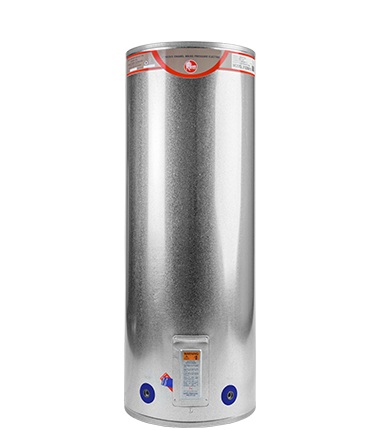Replacing Your Hot Water Cylinder - A Comprehensive Guide to Choosing the Best Option for Your Home
Replacing a hot water cylinder is an important decision for homeowners. Whether your current cylinder is outdated, inefficient, or no longer functioning properly, upgrading to a new system can significantly improve your home’s energy efficiency, hot water supply, and overall comfort. With various types of hot water cylinders available on the market, it’s crucial to understand the options, benefits, and considerations to make an informed choice. In this article, we’ll explore the process of replacing a hot water cylinder, the factors to consider, and the best options for your home.
Why Replace Your Hot Water Cylinder?
Hot water cylinders, often referred to as water heaters, are designed to store and provide hot water for daily use, including bathing, cooking, cleaning, and laundry. Over time, these systems can become inefficient, outdated, or damaged. Common signs that it might be time to replace your hot water cylinder include:
-
Age of the System: Traditional hot water cylinders typically last around 10-15 years, while newer models may last longer. If your system is reaching the end of its lifespan, it’s a good idea to start considering a replacement.
-
Frequent Breakdowns: Constant repairs or a decrease in performance, such as inconsistent hot water supply or strange noises, may indicate that the cylinder is no longer functioning efficiently.
-
Rising Energy Costs: Older models are often less energy-efficient, resulting in higher utility bills. If your energy costs are increasing, replacing your cylinder with a more energy-efficient model could save you money in the long run.
-
Leaks or Corrosion: Leaks or corrosion around your hot water cylinder are clear indicators of a malfunction that may require a full replacement to avoid water damage to your home.
Types of Hot Water Cylinders
When replacing your hot water cylinder, it’s important to choose the right type based on your needs, home size, and energy source. The main types of hot water cylinders are:
1. Vented Hot Water Cylinders (Gravity-fed Systems)
Vented cylinders are the traditional hot water storage systems. They are typically installed in homes with a cold water tank in the loft or attic. Water is fed into the cylinder by gravity, and the cylinder is vented to the atmosphere, allowing air to escape.
Pros:
- Simple and affordable
- Reliable and widely used
- Can be integrated with solar water heating systems
2. Unvented Hot Water Cylinders (Pressurized Systems)
Unvented cylinders are sealed systems that do not require a cold water tank. They rely on mains water pressure to supply hot water, providing better pressure and flow rates compared to vented systems.
Pros:
- High water pressure and flow rates
- No need for a cold water tank, saving space
- Suitable for modern homes with high hot water demand
3. Heat Pump Hot Water Cylinders
Heat pump cylinders use renewable energy from the air or ground to heat the water. They are a highly efficient option and are ideal for eco-conscious homeowners looking to reduce their carbon footprint.
Pros:
- Highly energy-efficient
- Reduced energy bills
- Environmentally friendly and eligible for government incentives
4. Solar Thermal Hot Water Cylinders
Solar thermal systems use energy from the sun to heat water. A solar collector absorbs sunlight, which is then transferred to a fluid that heats the water in the cylinder.
Pros:
- Environmentally friendly, using renewable solar energy
- Reduced running costs after installation
Factors to Consider When Replacing Your Hot Water Cylinder
When choosing a new hot water cylinder, several factors should influence your decision:
1. Energy Efficiency
Energy efficiency is a crucial factor when selecting a replacement cylinder. Opting for an energy-efficient model, such as an unvented or heat pump system, will help reduce your household’s carbon footprint and energy costs. Look for cylinders with a good Energy Rating label to ensure optimal performance.
2. Size and Capacity
The size of your hot water cylinder should match your household’s hot water demand. Larger households or those with higher hot water needs may require a bigger cylinder. Consider the number of bathrooms, appliances, and the overall water consumption when choosing the capacity of your new cylinder.
3. Installation Location
The location of your cylinder is an important consideration. For example, unvented cylinders require access to the mains water supply and must be installed in a place with sufficient space and ventilation. Some systems, like heat pumps, may require external space for installation. Ensure your home has the necessary infrastructure for the chosen model.
4. Budget
While more efficient systems, such as heat pump or solar thermal cylinders, can have higher initial costs, they can provide substantial long-term savings on energy bills. It’s essential to balance your initial budget with the potential for savings in the future. Some systems may also qualify for government incentives or rebates, which can reduce the overall cost.
5. Maintenance and Warranty
Ensure that the system you choose is easy to maintain and comes with a robust warranty. Some cylinders, especially heat pump systems, may require regular servicing. Choose a model that offers peace of mind in terms of reliability and service support.
Conclusion
Replacing your hot water cylinder is a significant investment, but it can lead to improved energy efficiency, lower utility bills, and a more reliable hot water supply. By understanding the different types of hot water cylinders and the factors that influence your decision, you can make an informed choice that suits your home’s needs, budget, and environmental goals. Whether you opt for a traditional vented system, an unvented pressurized system, or a more sustainable heat pump or solar option, choosing the right hot water cylinder will ensure comfort and efficiency for years to come.
Hot Water Solutions
3d Taid Place, Rosedale, Auckland
0800497658




Comments
Post a Comment